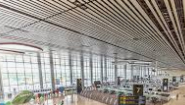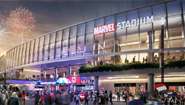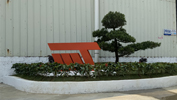Harnessing the Benefits of Mesh Panel Cladding for Exterior Architecture
Author:Jayminton Time:2024-08-07
 3
3
mesh panel cladding offers architects a canvas for creative expression, allowing for intricate designs, patterns, and textures that can transform a building's facade into a visually striking element of its design. Available in a variety of materials, including stainless steel, aluminum, and architectural mesh fabrics, these panels can be customized to achieve specific aesthetic objectives—from modern and minimalist to industrial and avant-garde styles. This versatility makes mesh panel cladding suitable for a wide range of architectural contexts, including commercial buildings, public spaces, and residential developments.
Security and Privacy
Beyond aesthetics, mesh panel cladding provides effective security and privacy solutions without compromising natural light or views. Depending on the mesh size and density, these panels can offer varying levels of transparency and opacity, allowing architects to strike a balance between openness and privacy according to the building's function and occupants' needs. This makes mesh panel cladding ideal for applications such as building perimeters, balconies, and public areas where both safety and aesthetic considerations are paramount.
Durability and Low Maintenance
Mesh panel cladding is renowned for its durability and resistance to environmental elements. Engineered from robust materials and often treated with protective coatings such as powder coating or anodization, these panels exhibit excellent corrosion resistance, weatherability, and UV stability. This ensures longevity and minimizes maintenance requirements over the lifespan of the building, making mesh panel cladding a cost-effective investment in terms of both initial installation and ongoing upkeep.
Sustainable Building Practices
In an era of increasing environmental consciousness, mesh panel cladding aligns with sustainable building practices. Many panels are manufactured from recyclable materials and contribute to green building certifications such as LEED (Leadership in Energy and Environmental Design). By enhancing energy efficiency through passive solar design and reducing the reliance on artificial lighting and ventilation, mesh panel cladding supports a building's overall sustainability goals while reducing its environmental footprint.
Practical Applications
Mesh panel cladding finds diverse applications in contemporary architecture, including:
- Commercial Buildings: Enhancing the aesthetic appeal and functionality of office complexes, shopping malls, and retail centers.
- Public Spaces: Providing security and visual interest in transportation hubs, parks, and cultural institutions.
- Residential Developments: Offering privacy and architectural enhancement in high-rise apartments and condominiums.
Conclusion
In conclusion, mesh panel cladding represents a paradigm shift in exterior architecture, offering architects and designers a blend of aesthetic versatility, functional benefits, and sustainable attributes. By harnessing the benefits of enhanced ventilation, natural light optimization, security, and durability, mesh panel cladding not only enhances the visual appeal of buildings but also contributes to their long-term operational efficiency and environmental responsibility. As architectural trends continue to evolve, mesh panel cladding remains a timeless and transformative element in the built environment, shaping the future of exterior design with its innovative capabilities and enduring appeal.

 S1 Clip-in Metal ceiling System
S1 Clip-in Metal ceiling System JMT-L4.2 U-Baffle System
JMT-L4.2 U-Baffle System JMT Aluminum Wall Cladding
JMT Aluminum Wall Cladding Aluminum Honeycomb Panel
Aluminum Honeycomb Panel Air-Condenser Cover
Air-Condenser Cover Metal Heat Cover
Metal Heat Cover Singapore Changi Airport T2 Arrival
Singapore Changi Airport T2 Arrival Australia Marvrl Stadium City Edge
Australia Marvrl Stadium City Edge Enterprise Information Announcement
Enterprise Information Announcement Construction Industry Solutions
Construction Industry Solutions About Jayminton
About Jayminton Contact US
Contact US